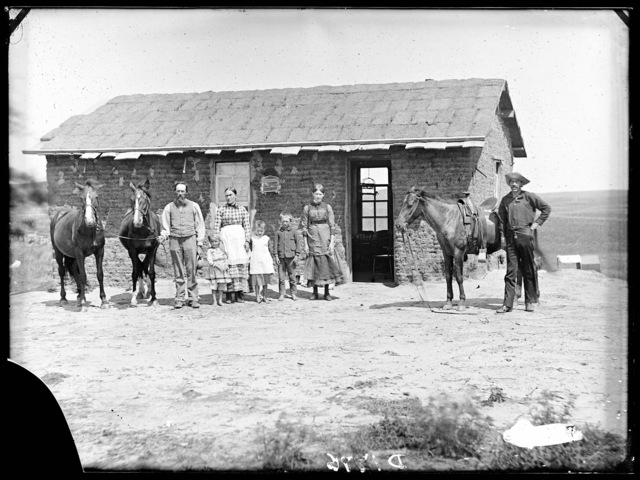Digital Homesteading
Bridging the Gap Between Tradition and Technology
In today's fast-paced digital world, the concept of homesteading—establishing self-sufficiency and a deep connection to the land—may seem at odds with our increasingly interconnected and tech-driven lives. However, there's a growing movement known as "Digital Homesteading" that seeks to merge the timeless values of traditional homesteading with the digital realm. In this blog post, we'll explore how digital homesteading inherits core values, mindset, and skills from its rustic predecessor

Traditional homesteader lived a hard but free life
Self-Sufficiency & Independence:
In traditional homesteading, individuals strive to produce their own food, energy, and resources, thereby reducing their reliance on external sources. This lifestyle promotes self-reliance and sustainability, as homesteaders aim to meet their basic needs through their own efforts.
In contrast, digital homesteading focuses on self-sufficiency in the digital domain. Digital homesteaders seek to take control of their online presence by minimizing their dependence on centralized digital platforms and services. They achieve this by hosting their websites, managing their email servers, and storing data locally, reducing their reliance on tech giants and third-party services. This digital self-sufficiency involves using open-source software and self-hosted solutions wherever possible, giving individuals greater autonomy and control over their data and online activities.
In both traditional and digital homesteading, the core principle is to reduce reliance on external sources and take control of essential aspects of life, whether in the physical or digital world.
Connection to the Digital Space:
In traditional homesteading, individuals have a deep connection to the physical land and natural environment. They understand the importance of sustainable practices and responsible stewardship of the Earth. Their connection is rooted in the tangible world and the need to ensure the well-being of the land and its resources.
Digital homesteaders, on the other hand, forge a connection to the digital space. They place a high value on responsible and ethical use of technology, recognizing the significance of the digital ecosystem. They understand the interconnectedness of the online world and its far-reaching impact on society. Just as traditional homesteaders care for the land, digital homesteaders care for the digital landscape, striving to maintain its health and integrity.
In both cases, whether in the physical or digital realm, there exists a profound connection driven by a sense of responsibility and respect for their respective environments and ecosystems.
Skill-Building:
Traditional homesteading involves acquiring a diverse set of skills, encompassing farming, animal husbandry, and food preservation. This traditional lifestyle is deeply rooted in self-sufficiency and resilience. In contrast, the concept of digital homesteading revolves around acquiring and honing digital skills. Digital homesteaders dedicate themselves to learning various aspects of the online world, from enhancing online security to mastering coding and server management. These skills empower them to navigate and thrive in the digital landscape, mirroring the self-sufficiency values of their traditional counterparts, albeit in a modern, technology-driven context.
Resilience:
Both traditional homesteading and digital homesteading share a common thread of preparedness and resilience. In traditional homesteading, individuals prepare for challenges such as economic downturns or natural disasters, ensuring they can sustain themselves in adverse conditions. Similarly, in the realm of digital homesteading, individuals focus on enhancing their digital resilience. They achieve this by devising backup plans, maintaining data backups, and implementing robust cybersecurity measures to safeguard against digital disruptions. This shared commitment to preparedness underscores the importance of resilience in both traditional and digital contexts, albeit with different sets of challenges in mind.
Ethical and Healthy Living:
Traditional homesteading and digital homesteading both place a strong emphasis on ethical practices in their respective domains. Traditional homesteaders prioritize the ethical treatment of animals and sustainable farming practices, recognizing the importance of responsible stewardship of the land and its resources.
In the digital realm, digital homesteaders extend these values by advocating for ethical digital practices. They champion concepts such as online privacy, responsible technology use, and digital well-being. These principles are crucial in a world increasingly dominated by technology, where the responsible and ethical use of digital tools and platforms is vital to protect individuals and society as a whole. In essence, both traditional and digital homesteading share a commitment to ethical and sustainable practices, whether in the physical or virtual world.
Closing Thoughts:
Digital homesteading bridges the gap between the timeless values of traditional homesteading and the digital age. It's about taking control of your digital life, reducing dependencies on external platforms, and fostering a responsible and self-sufficient digital lifestyle. Whether you're growing your own food or managing your own server, the principles of self-sufficiency, sustainability, and independence remain at the heart of this movement. Embrace the mindset and skills of digital homesteading to navigate the digital world with confidence and integrity, just as our ancestors did with the land.